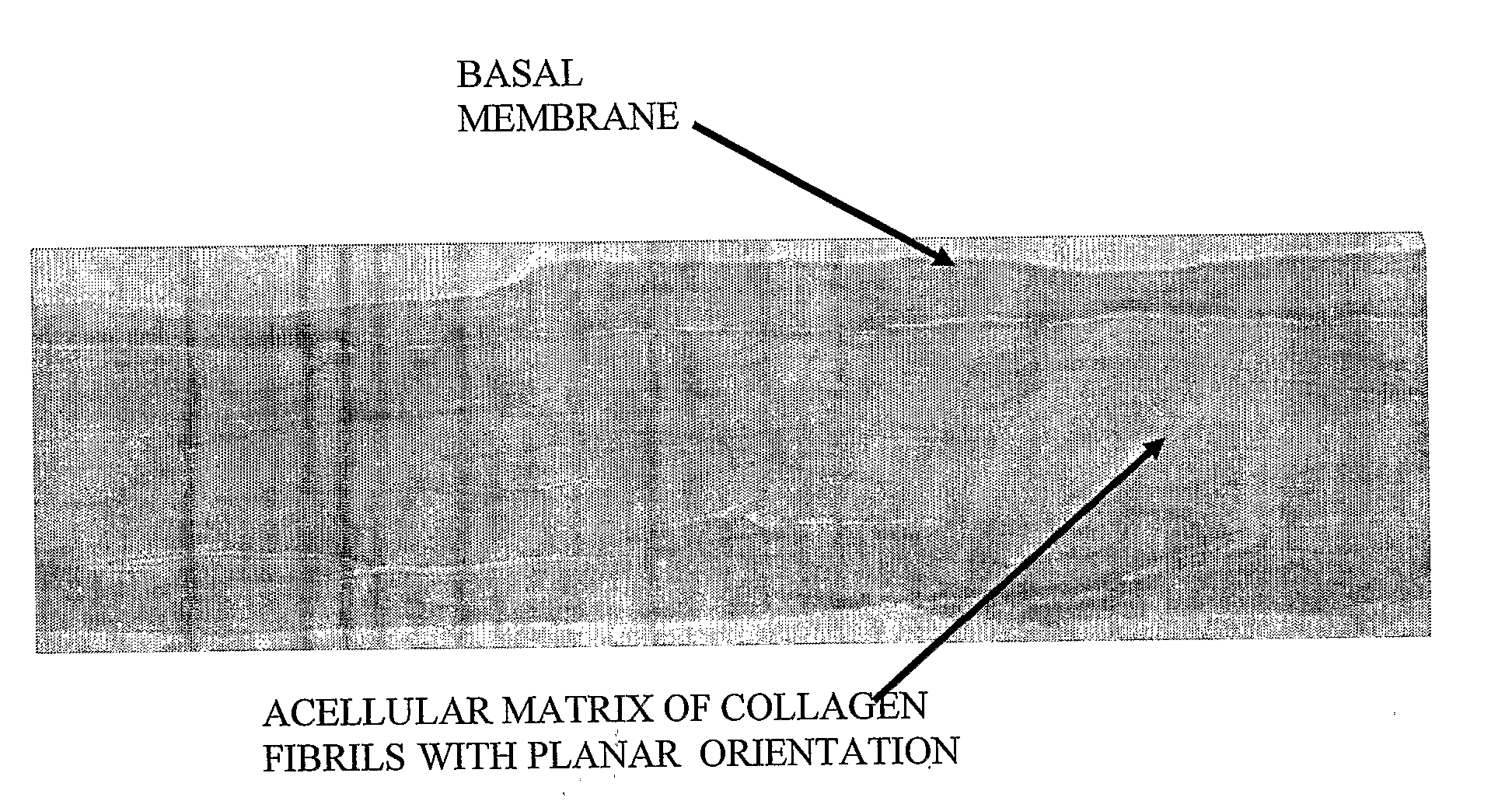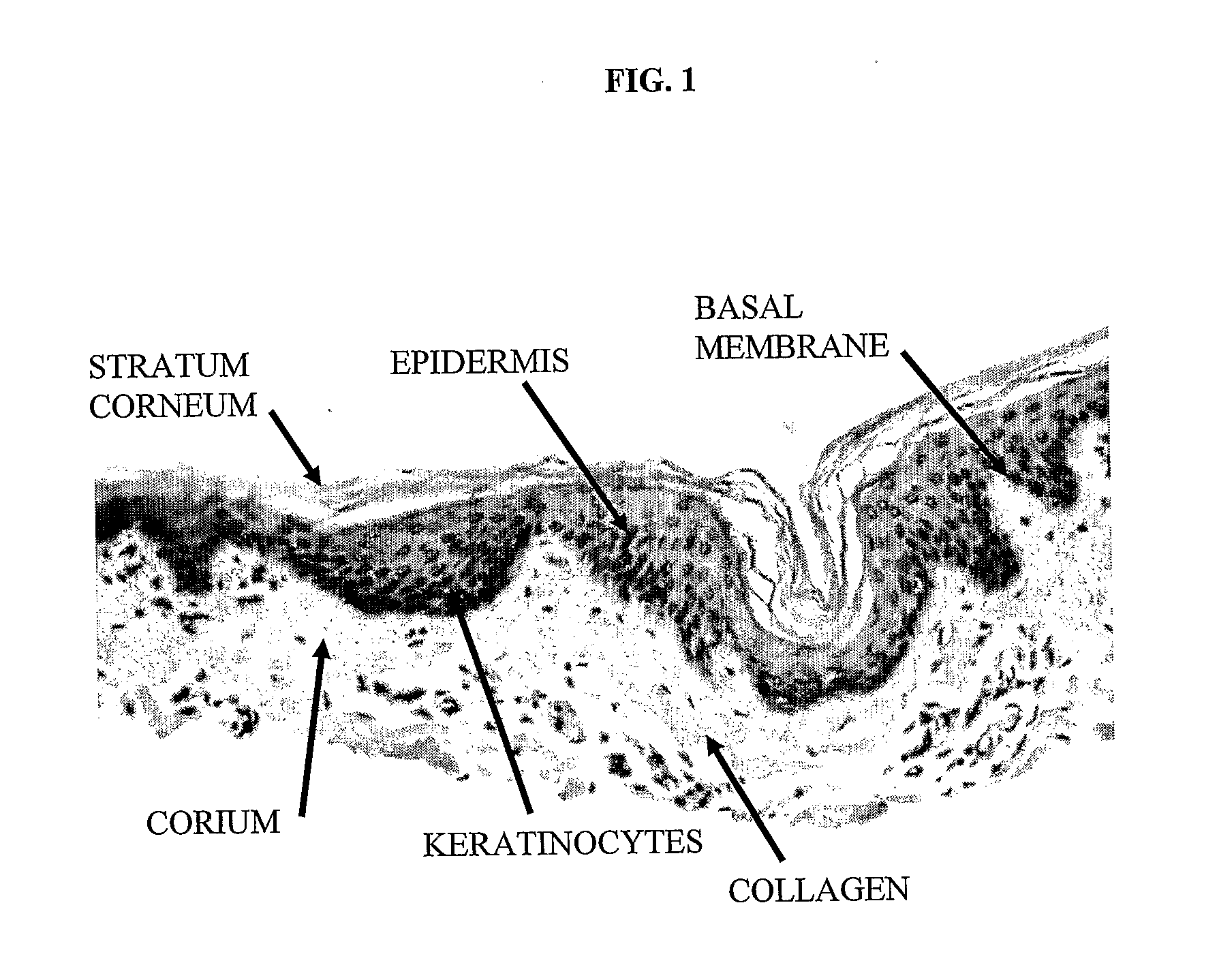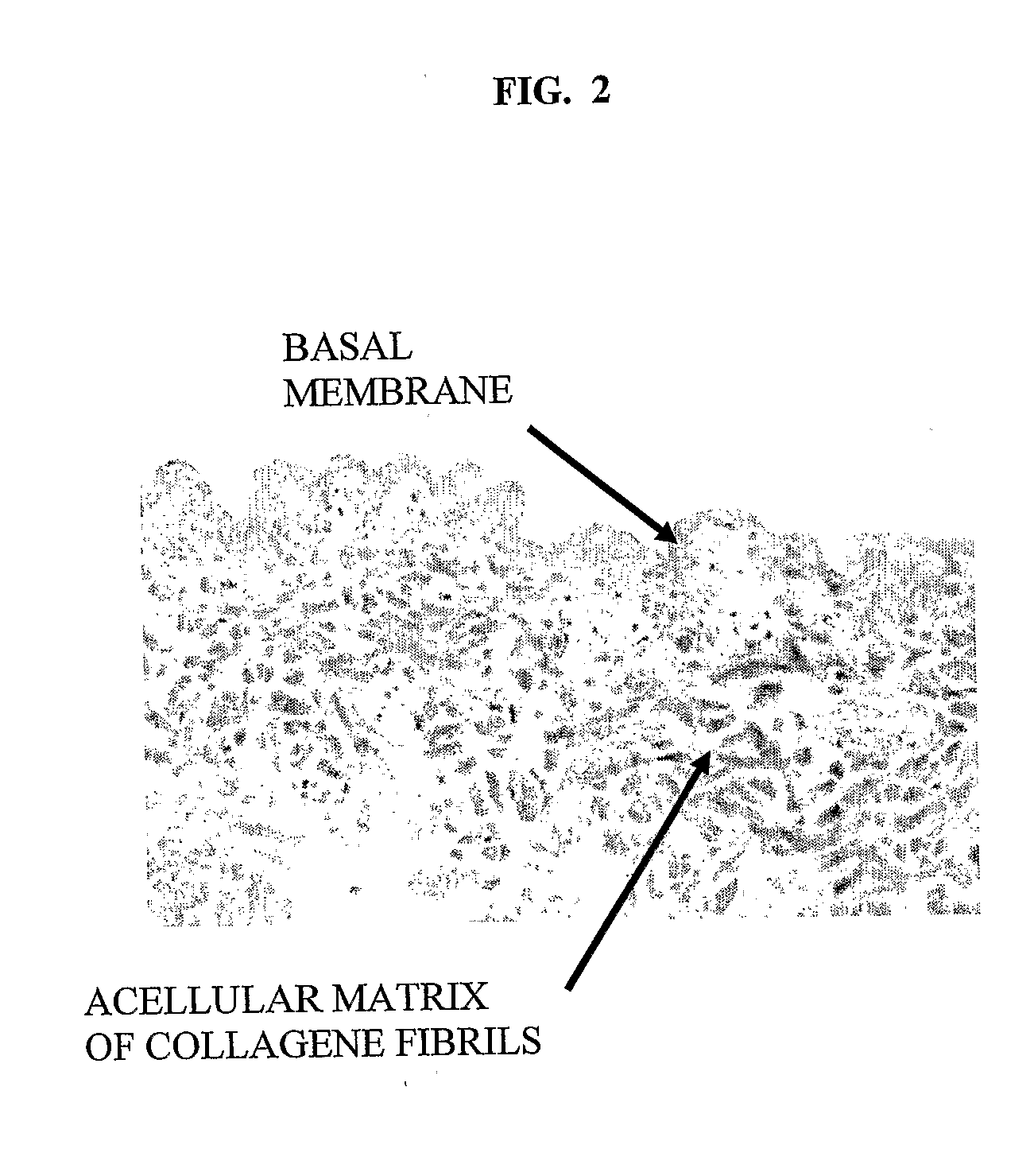Sterile Autologous, Allogenic or Xenogenic Implant and the Method of its Production
- Summary
- Abstract
- Description
- Claims
- Application Information
AI Technical Summary
Benefits of technology
Problems solved by technology
Method used
Image
Examples
example 1
Porcine Skin as a Xenotransplant
[0082]Using a dermatome, a 300-400 micron thick layer was cut from a shaved and cleaned porcine epidermis including the papillary corium layer. Histogram of the removed layer is in FIG. 1. The removed strip of porcine skin was immersed 3 times for 20 minutes at 37° C. and the for 12 hours at 4° C. in a 0.25% trypsin solution, which removed most dermal cells and separated the epidermis. The obtained epidermis was washed 6 times in demineralized water (3× for 1 hour, 1× or 12 hours, 2× for 0.5 hours) to remove remaining cells and trypsin. The FIG. 2 histogram shows, that the non-cellular structure was retained. The strip of dermis was then attached with an adhesive to a glass Petri dish and dried at room temperature to constant weight. In this state the dermis contained approx. 18% water. Thus dried acellular dermis had the same footprint area s the original hydrated dermis, but its thickness was less than half. The stretched acellular dermis was then i...
example 2
Implant Prepared According to Example 1 was Used on a 3rd Degree Burn
[0092]The damaged tissue was carefully cut off. The dehydrated transplant was removed from its sterile packaging, was adjusted to the size and shape of the treated area using scissors, was placed on the bleeding wounded area, and was sprayed with a sterile antibiotic solution. The xenotransplant softened quickly and adhered to the wounded area's surface, which stopped the bleeding. The implant retained its dehydrated state footprint, but its thickness increased upon hydration. This caused a perfect conformance to the wound. The implant was covered with a protective layer of tulle gras dressing for the first 3 days. After 8 days the implant dried out to a scab-like consistency and began to separate from the newly formed skin under the cover. New epidermis began to slowly form under the implant, as shown on FIG. 7. After healing was complete, healthy and naturally structured skin was formed, including natural pigment...
example 3
Human Cartilage as an Allotransplant
[0093]Cartilage harvested from a hip joint of a deceased donor was made free of cells by repeated soaking in a trypsin solution and in distilled water, then it was attached, using vacuum, with its concave side onto the convex side of a suitably shaped porous substrate made of fritted glass. While on this substrate, it was placed into an excess of a solution of 20 parts (by weight) methanol and 5 parts (by weight) dimethylsulfoxide (DMSO) at 35° C. for a period of 48 hours. Thus the acellular implant was dehydrated, and at the same time the collagen contained within it was partially denatured in a plane-oriented state. After this period the acellular allotransplant was removed from the solution and methanol was evaporated at room temperature using air stream. At the end of this step the transplant contained approx. 13% (by weight) DMSO, approx. 4% (by weight) water and less that 0.5% (by weight) methanol. After being removed from the porous substra...
PUM
| Property | Measurement | Unit |
|---|---|---|
| Temperature | aaaaa | aaaaa |
| Temperature | aaaaa | aaaaa |
| Temperature | aaaaa | aaaaa |
Abstract
Description
Claims
Application Information
 Login to View More
Login to View More - R&D
- Intellectual Property
- Life Sciences
- Materials
- Tech Scout
- Unparalleled Data Quality
- Higher Quality Content
- 60% Fewer Hallucinations
Browse by: Latest US Patents, China's latest patents, Technical Efficacy Thesaurus, Application Domain, Technology Topic, Popular Technical Reports.
© 2025 PatSnap. All rights reserved.Legal|Privacy policy|Modern Slavery Act Transparency Statement|Sitemap|About US| Contact US: help@patsnap.com



